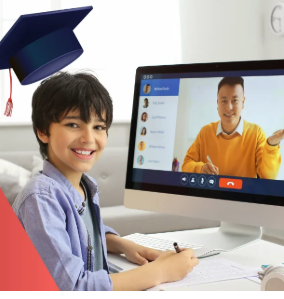Personalized learning is no longer a future goal—it’s now a practical and achievable approach to online education. With the help of digital tools, tutors can tailor lessons to match each student’s pace, learning style, and academic needs. This individual-focused method leads to better engagement, improved outcomes, and a more positive learning experience overall.
Why Personalization Matters in Tutoring
Every student learns differently. While some grasp concepts through visuals, others prefer step-by-step instruction or real-time interaction. Personalizing online tutoring means understanding these differences and adjusting methods accordingly. When students feel that their needs are being met, they are more motivated to participate and succeed.
Key Tools That Support Personalized Online Tutoring
- Learning Management Platforms
Platforms like Google Classroom, Moodle, and Canvas allow tutors to organize content by skill level or topic. They can assign personalized tasks, track performance, and offer targeted feedback. - Interactive Whiteboards
Digital whiteboards like Miro or Ziteboard enable tutors to illustrate ideas live, creating a more engaging environment for visual learners. These tools also allow for collaborative problem-solving. - Adaptive Learning Software
Tools such as Khan Academy or IXL adapt questions based on student responses. These platforms automatically adjust the difficulty level to match the learner’s progress. - Scheduling and Progress Tracking Apps
Calendly and Trello help tutors manage sessions and track milestones. Progress dashboards give students a visual overview of their achievements and areas to improve. - Video Conferencing Tools with Screen Sharing
Zoom, Google Meet, and Microsoft Teams provide features like breakout rooms and screen sharing, allowing tutors to offer individualized help or small group instruction within a single session. - Assessment and Feedback Tools
Quizizz, Socrative, and Formative make it easy to run quick checks for understanding and gather feedback. Tutors can use this data to refine instruction and offer support where it’s needed most.
Best Practices for Personalized Online Tutoring
- Set clear learning goals: Collaborate with students to define objectives and track progress.
- Use student data wisely: Monitor performance trends to identify strengths and challenges.
- Foster open communication: Encourage students to express what works for them and adjust accordingly.
- Incorporate diverse materials: Use videos, quizzes, reading passages, and hands-on activities to address various learning preferences.
Conclusion
Digital tools are transforming how tutors connect with and support learners. By personalizing the experience, tutors not only help students achieve academic goals but also build their confidence and independence. As technology continues to advance, the opportunities to create customized, impactful tutoring sessions will only grow stronger.


